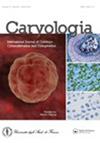污水对韭菜和玉米染色体损伤的研究。
IF 2.1
4区 生物学
Q2 Agricultural and Biological Sciences
引用次数: 1
摘要
采用有丝分裂染色体畸变法研究了印度西孟加拉邦北部24 Parganas(22.6168°N, 88.4029°E)地区Khardah(22.7003°N, 88.3753°E)、Titagarh(22.7383°N, 88.3737°E)、Madhyamgram(22.6924°N, 88.4653°E)和Control(蒸馏水)3个地点的污水样品对洋葱(Allium cepa L.)和玉米(Zea mays L.)染色体损伤的影响。对污水样品的理化分析表明,其pH值为5.10-5.30。少数重元素:来自Khardah(22.7003°N, 88.3753°E)污水样品中的Fe, Mn和Zn超过印度标准10500:2012和WHO(2006)允许限量。而Cl、Cu、Pb、Cr、Cd则基本在标准条件的限制范围内。所获得的数据显示,细胞的生殖能力下降,并发生偏离正常有丝分裂的细胞分裂。有丝分裂指数(MI)在两种情况下均显著降低(p < 0.05),在韭菜中为对照(57.03%)>中野(41.70%)>提塔格尔(33.85%)>哈达尔(31.57%),在玉米中为对照(49.33%)>提塔格尔(21.45%)>中野(26.47%)>哈达尔(24.05%)。与对照相比,经污水处理的作物核裂、核解、片段、滞后染色体、后期桥的数量显著增加。重金属作为污染物存在于污水样品中,对细胞具有细胞毒性,威胁着水生态系统和人体健康。本文章由计算机程序翻译,如有差异,请以英文原文为准。
Chromosomes damage by sewage water studies in the Allium cepa L. and Zea mays L.
The effect of sewage water sample of the three locations Khardah (22.7003° N, 88.3753° E), Titagarh (22.7383° N, 88.3737° E), Madhyamgram (22.6924° N, 88.4653° E), and Control (distilled H2O) in the district of North 24 Parganas (22.6168° N, 88.4029° E), West Bengal, India on the damage of chromosomes in the onion (Allium cepa L.) and maize plant (Zea mays L.) were investigated by employing mitotic chromosomal aberration assay. Physiochemical analysis of sewage water samples showed the pH is 5.10-5.30 in nature. Few heavy elements: Fe, Mn and Zn in the sample from Khardah (22.7003° N, 88.3753° E) sewage water exceeded the Indian Standard 10500:2012 and WHO’s (2006) permissible limits. Whereas Cl, Cu, Pb, Cr, and Cd are more or less within limit of the standard condition. The obtained data exhibited a decline in reproductive capacity of cells and the occurrence of deviation from the normal mitotic cell division. The mitotic index (MI) decreased significantly (p < 0.05) in both the cases and is given as Control (57.03 %) > Madhyamgram (41.70 %) > Titagarh (33.85 %) > Khardah (31.57 %) in Allium cepa L. and Control (49.33 %) > Titagarh (21.45 %) > Madhyamgram (26.47 %) > Khardah (24.05 %) in Zea mays L. The chromosomal aberrations (CAs): Karyorrhexis, Karyolysis, Fragments, Lagging chromosome, Anaphase bridges are present in significant amount in the crops treated with sewage water sample than the one with control condition. Heavy metals act as pollutants in the sewage water sample which has cytotoxic effect on cells, threat to water ecosystem and human health.
求助全文
通过发布文献求助,成功后即可免费获取论文全文。
去求助
来源期刊

Caryologia
生物-遗传学
CiteScore
1.60
自引率
23.80%
发文量
26
审稿时长
12 months
期刊介绍:
Caryologia is devoted to the publication of original papers, and occasionally of reviews, about plant, animal and human karyological, cytological, cytogenetic, embryological and ultrastructural studies. Articles about the structure, the organization and the biological events relating to DNA and chromatin organization in eukaryotic cells are considered. Caryologia has a strong tradition in plant and animal cytosystematics and in cytotoxicology. Bioinformatics articles may be considered, but only if they have an emphasis on the relationship between the nucleus and cytoplasm and/or the structural organization of the eukaryotic cell.
 求助内容:
求助内容: 应助结果提醒方式:
应助结果提醒方式:


